Dog owners often find themselves trying to choose between two relatively similar dog food brands. One of the most common examples involves two heavyweights in the pet food industry: Taste of the Wild and Blue Buffalo.
To be clear, both of these two brands produce excellent foods. Most dogs will thrive on a recipe made by either manufacturer.
But as pet parents, we are rarely satisfied with “good enough.” We want the best for our canine kiddos.
So, we’ll try to help you figure out which of these brands is best for your dog. We’ll run down the basics of each brand, highlight their respective pros and cons, and outline the recipes they offer.
We’ll also share our hands-on experiences with these brands.
I have fed my dogs one of these brands for years, but I recently tried the other. I’ll let you know whether I stuck with the swap or went back to ‘ol reliable.
Table of Contents
Taste of the Wild vs Blue Buffalo
Getting to Know the Brands: Taste of the Wild vs Blue Buffalo
Let’s start by digging into some of the basic info about each brand. Spoiler alert: You’re going to notice that they’re both pretty darn similar. That’s part of the reason owners often find themselves trying to choose from between the two.
Taste of the Wild: Brand Basics

Taste of the Wild falls under the Diamond Pet Foods umbrella, which is a family-owned and operated company, run by the Schell and Kampeter families.
The brand is committed to:
…creating flavorful and affordable recipes for dogs and cats that are inspired by the protein sources of their ancestral diet.
And they do so by offering recipes based on different ecological themes.
For example, they offer recipes based around prairie ecosystems, wetland ecosystems, riparian ecosystems, and so on. Notably, the wet foods offered by the brand are designed to parallel their dry options.
Though the brand’s original recipes were grain-free options with mixed-proteins, they now offer grain-inclusive and single-protein (LID) recipes too. Their recipe lineup is mostly comprised of kibbles, but they also offer a handful of wet food options.
Taste of the Wild markets three different formula lines, each comprised of several individual recipes.
Taste of the Wild:
- Pine Forest Canine Recipe with Venison and Legumes
- Sierra Mountain Canine Recipe with Roasted Lamb
- Southwest Canyon Canine Recipe with Wild Boar
- High Prairie Puppy Recipe with Roasted Bison & Roasted Venison
- Pacific Stream Puppy Recipe with Smoke-Flavored Salmon
- Appalachian Valley Small Breed Canine Recipe with Venison & Garbanzo Beans
- High Prairie Canine Recipe with Roasted Bison & Roasted Venison
- Pacific Stream Canine Recipe with Smoke-Flavored Salmon
- Wetlands Canine Recipe with Roasted Fowl
- Sierra Mountain Canine Recipe with Lamb in Gravy [Wet Food]
- High Prairie Canine Recipe with Bison in Gravy [Wet Food]
- Pacific Stream Canine Recipe with Salmon in Gravy [Wet Food]
- Southwest Canyon Canine Recipe with Beef in Gravy [Wet Food]
- Wetlands Canine Recipe with Fowl in Gravy [Wet Food]
Taste of the Wild with Ancient Grains:
- Ancient Mountain Canine Recipe with Roasted Lamb
- Ancient Prairie Canine Recipe with Roasted Bison & Roasted Venison
- Ancient Stream Canine Recipe with Smoke-Flavored Salmon
- Ancient Wetlands Canine Recipe with Roasted Fowl
PREY Limited Ingredient:
- Angus Beef Limited Ingredient Recipe for Dogs
- Trout Limited Ingredient Recipe for Dogs
- Turkey Limited Ingredient Recipe for Dogs
All Taste of the Wild recipes are manufactured in one of six US-based facilities, which are spread across five states: California, Kansas, South Carolina, Missouri, and Arkansas.
Blue Buffalo: Brand Basics

Blue Buffalo was born when founder Bill Bishop’s Airedale terrier (whose name was Blue) was diagnosed with cancer. Following this, Bishop and his sons set out to find the very best food available. Unsatisfied with the options available, they launched their own dog food business in 2003.
Among other things, Blue Buffalo prides itself on using only the highest-quality ingredients. As the brand explains:
Our promise to feed Blue the best food possible evolved into a whole new way of feeding pets. Healthy ingredients aren’t just a trend for us; they’re a part of our history.
Blue Buffalo is now a household name and behemoth in the dog-food world.
And unlike Taste of the Wild, who offers a relatively limited set of recipes, Blue Buffalo’s lineup is massive, being comprised of 187 different recipes (targeting all the different life stages) in total.
Given the size of Blue Buffalo’s product lineup, we’re not going to list them all. But we’ll share a list of their basic formula lines and explain the ways in which they differ.
- Baby Blue: A puppy-focused formula line, consisting of four different grain-inclusive kibbles.
- Basics: A limited-ingredient line comprised of 24 recipes, including wet and dry options.
- Freedom: A collection of 18 grain-free recipes, available in wet and dry forms.
- Life Protection: The brand’s primary formula, featuring 90 different recipes in dry and wet form.
- Natural Veterinary Diet: A line with 14 different veterinarian-designed wet and dry recipes.
- True Solutions: A formula line comprised of 14 foods designed to provide different health benefits for different kinds of issues, such as weight management, sensitive stomachs, or joint pain.
- Wilderness: 67 different recipes, including wet foods and dry options, make up this formula line.
It’s worth noting that Blue Buffalo’s Wilderness product line is most similar to Taste of the Wild’s offerings.
One of the most noteworthy features of Blue Buffalo foods is the inclusion of the brand’s trademarked LifeSource Bits — antioxidant-rich little pieces of kibble that appear in every dry food the brand offers.
Blue Buffalo makes most of its foods in the United States. The brand owns two facilities (located in Joplin, Missouri and Richmond, Indiana), but they also contract with other US-based manufacturing plants to produce their foods.
Some of their foods are also manufactured in Thailand. The brand doesn’t explicitly detail which ones are, so we’ve asked them. We’ll update this article when we receive a response.
Recall History: Taste of the Wild and Blue Buffalo

Contrary to popular thought, we don’t think the recalls should necessarily be a huge factor in the food-selection process of owners.
Obviously, you don’t want to purchase food from a brand that demonstrates a pattern of issuing recalls, but we don’t think isolated recalls are dealbreakers.
Manufacturing problems happen — it’s just part of the commercial food production industry. In fact, recalls of human foods happen all the time.
And we mean big, name brands, like Kellogg’s, General Mills, Nabisco, and Purdue (it took approximately 8 seconds to find these examples, and there are scads of others).
In fact, recalls demonstrate that the safety process is working.
All that said, recalls do trouble some owners, so we’ll share the ones we could find:
- Diamond Pet Foods (Taste of the Wild’s parent company) initiated a recall in 2012 of several of their brands for suspected Salmonella contamination.
- Blue Buffalo initiated a recall in 2017 for some of its recipes for elevated levels of naturally occurring beef thyroid hormone. It also issued recalls for two wet recipes, for possible aluminum contamination and packaging problems. They also initiated a recall in 2016 for mold issues related to some of their recipes containing sweet potatoes. Blue Buffalo was also one of the brands who were caught up in the major recall of 2007, involving melamine in dog foods.
The takeaway here is that if brand’s history of recalls is something that is important to your food-selection decision, you should probably go with Taste of the Wild, as the brand has had fewer.
Head-to-Head Comparison: Taste of the Wild and Blue Buffalo

With the basics out of the way, we can start comparing Taste of the Wild and Blue Buffalo in head-to-head fashion.
| Taste of the Wild | Blue Buffalo | |
| Made in the USA? | Yes | Some products are; others are not |
| Where are the ingredients sourced from? | Globally sourced | Globally sourced |
| Who develops food formulas and recipes? | Recipes are designed in cooperation with a staff veterinarian and nutritionist | On-staff veterinarians and PhD-level animal nutritionists |
| Limited ingredient options? | Yes | Yes |
| Grain-free & grain-inclusive options? | Yes | Yes |
| Chicken-free options? | Yes | Yes |
| Exotic proteins available? | Yes | No |
| Veterinary Diets? | No | Yes |
| Pricing? | $$$-$$$$ | $$$-$$$$$ |
In terms of ingredients, let’s look at the lists of leading recipes from each brand.
Taste of the Wild’s High Prairie recipe is likely the brand’s most popular.
Here is the ingredient list for it:
Ingredients List
Water Buffalo, Lamb Meal, Chicken Meal, Sweet Potatoes, Peas...,
Pea Flour, Chicken Fat (Preserved With Mixed Tocopherols), Egg Product, Roasted Bison, Roasted Venison, Beef, Natural Flavor, Tomato Pomace, Ocean Fish Meal, Salt, Choline Chloride, Taurine, Dried Chicory Root, Tomatoes, Blueberries, Raspberries, Yucca Schidigera Extract, Dried Lactobacillus Plantarum Fermentation Product, Dried Bacillus Subtilis Fermentation Product, Dried Lactobacillus Acidophilus Fermentation Product, Dried Enterococcus Faecium Fermentation Product, Dried Bifidobacterium Animalis Fermentation Product, Vitamin E Supplement, Iron Proteinate, Zinc Proteinate, Copper Proteinate, Ferrous Sulfate, Zinc Sulfate, Manganese Sulfate, Copper Sulfate, Potassium Iodide, Thiamine Mononitrate, Manganese Proteinate, Ascorbic Acid, Vitamin A Supplement, Biotin, Niacin, Calcium Pantothenate, Sodium Selenite, Pyridoxine Hydrochloride, Vitamin B12 Supplement, Riboflavin, Vitamin D3 Supplement, Folic Acid.
On the other hand, one of the most popular Blue Buffalo products is likely their Life Protection Chicken & Brown Rice recipe.
Here are the ingredients it contains:
Ingredients List
Deboned Chicken, Chicken Meal, Brown Rice, Oatmeal, Barley...,
Peas, Chicken Fat (preserved with Mixed Tocopherols), Dried Tomato Pomace, Natural Flavor, Flaxseed (source of Omega 3 & 6 Fatty Acids), Dried Yeast, Salt, Direct Dehydrated Alfalfa Pellets, Potassium Chloride, Dried Chicory Root, Alfalfa Nutrient Concentrate, Calcium Carbonate, Choline Chloride, L-Threonine, DL-Methionine, preserved with Mixed Tocopherols, Dried Sweet Potatoes, Carrots, Taurine, Zinc Amino Acid Chelate, Zinc Sulfate, Vegetable Juice for color, Ferrous Sulfate, Vitamin E Supplement, Iron Amino Acid Chelate, Glucosamine Hydrochloride, Blueberries, Cranberries, Barley Grass, Parsley, Turmeric, Dried Kelp, Yucca Schidigera Extract, Niacin (Vitamin B3), Calcium Pantothenate (Vitamin B5), Copper Sulfate, Biotin (Vitamin B7), L-Ascorbyl-2-Polyphosphate (source of Vitamin C), L-Lysine, Vitamin A Supplement, Copper Amino Acid Chelate, Manganese Sulfate, Manganese Amino Acid Chelate, Thiamine Mononitrate (Vitamin B1), Riboflavin (Vitamin B2), Vitamin D3 Supplement, Vitamin B12 Supplement, Pyridoxine Hydrochloride (Vitamin B6), Calcium Iodate, Dried Enterococcus faecium Fermentation Product, Dried Lactobacillus acidophilus Fermentation Product, Dried Aspergillus niger Fermentation Extract, Dried Trichoderma longibrachiatum Fermentation Extract, Dried Bacillus subtilis Fermentation Extract, Folic Acid (Vitamin B9), Sodium Selenite, Oil of Rosemary.
There are a few similarities between the two, but the differences are immediately obvious.
- The Taste of the Wild recipe features a litany of different whole proteins and properly labelled meat meals, while Blue Buffalo typically includes only one whole protein and one meat meal in their recipes.
- Taste of the Wild contains everything from bison to venison to beef to lamb meal; Blue Buffalo only includes chicken-based proteins.
- This Taste of the Wild recipe is grain-free; this Blue Buffalo recipe is grain-inclusive.
- Though both recipes contain produce, Blue Buffalo’s recipe contains a greater variety.
- The Blue Buffalo recipe lists glucosamine, but the Taste of the Wild recipe does not.
But to be fair, these recipes probably aren’t positioned to go after the same canine customer. For a better head-to-head comparison, let’s take the same Taste of the Wild recipe, but this time, let’s compare it with Blue Buffalo Wilderness Rocky Mountain recipe.
Once again, Taste of the Wild High Prairie:
Ingredients List
Water Buffalo, Lamb Meal, Chicken Meal, Sweet Potatoes, Peas...,
Pea Flour, Chicken Fat (Preserved With Mixed Tocopherols), Egg Product, Roasted Bison, Roasted Venison, Beef, Natural Flavor, Tomato Pomace, Ocean Fish Meal, Salt, Choline Chloride, Taurine, Dried Chicory Root, Tomatoes, Blueberries, Raspberries, Yucca Schidigera Extract, Dried Lactobacillus Plantarum Fermentation Product, Dried Bacillus Subtilis Fermentation Product, Dried Lactobacillus Acidophilus Fermentation Product, Dried Enterococcus Faecium Fermentation Product, Dried Bifidobacterium Animalis Fermentation Product, Vitamin E Supplement, Iron Proteinate, Zinc Proteinate, Copper Proteinate, Ferrous Sulfate, Zinc Sulfate, Manganese Sulfate, Copper Sulfate, Potassium Iodide, Thiamine Mononitrate, Manganese Proteinate, Ascorbic Acid, Vitamin A Supplement, Biotin, Niacin, Calcium Pantothenate, Sodium Selenite, Pyridoxine Hydrochloride, Vitamin B12 Supplement, Riboflavin, Vitamin D3 Supplement, Folic Acid.
And here is Blue Buffalo Wilderness Rocky Mountain Recipe:
Ingredients List
Deboned Beef, Beef Meal, Chicken Meal, Oatmeal, Barley...,
Brown Rice, Potatoes, Dried Tomato Pomace, Salmon Meal (source of Omega 3 Fatty Acids), Potato Starch, Flaxseed (source of Omega 6 Fatty Acids), Potato Protein, Natural Flavor, Chicken Fat (preserved with Mixed Tocopherols), Fish Oil (source of EPA-Eicosapentaenoic Acid), Direct Dehydrated Alfalfa Pellets, Deboned Venison, Deboned Lamb, Potassium Chloride, Dried Chicory Root, Alfalfa Nutrient Concentrate, Calcium Carbonate, Choline Chloride, DL-Methionine, Salt, L-Threonine, Taurine, preserved with Mixed Tocopherols, Vitamin E Supplement, Sweet Potatoes, Carrots, Glucosamine Hydrochloride, L-Carnitine, Zinc Amino Acid Chelate, Zinc Sulfate, Vegetable Juice for color, Chondroitin Sulfate, Ferrous Sulfate, Iron Amino Acid Chelate, Blueberries, Cranberries, Barley Grass, Parsley, Turmeric, Dried Kelp, Yucca Schidigera Extract, Niacin (Vitamin B3), Calcium Pantothenate (Vitamin B5), L-Ascorbyl-2-Polyphosphate (source of Vitamin C), L-Lysine, Copper Sulfate, Biotin (Vitamin B7), Vitamin A Supplement, Copper Amino Acid Chelate, Manganese Sulfate, Manganese Amino Acid Chelate, Thiamine Mononitrate (Vitamin B1), Riboflavin (Vitamin B2), Vitamin D3 Supplement, Vitamin B12 Supplement, Pyridoxine Hydrochloride (Vitamin B6), Calcium Iodate, Dried Yeast, Dried Enterococcus faecium fermentation product, Dried Lactobacillus acidophilus fermentation product, Dried Aspergillus niger fermentation extract, Dried Trichoderma longibrachiatum fermentation extract, Dried Bacillus subtilis fermentation extract, Folic Acid (Vitamin B9), Sodium Selenite, Oil of Rosemary;
Once again, there are differences between the two, but they’re far more similar than the original recipes we compared. So, if you’re weighing these two brands against each other, these are likely the best two recipes to consider.
The primary differences here are the selection of proteins included (though both of these contain multiple protein sources) and the presence of grains — Taste of the Wild is grain-free; Blue Wilderness contains grains.
However, there is one more important difference: Taste of the Wild High Prairie recipe is formulated to meet the AAFCO guidelines for adult maintenance, while Blue Wilderness Rocky Mountain recipe is formulated to meet the guidelines for growth and reproduction (excluding growth of large-size dogs).
That basically means Taste of the Wild is only suitable for adult dogs, but the Blue Wilderness recipe would also be acceptable for small- or medium-sized puppies (both recipes would be suitable for senior dogs as well).
But what about other types of nutritional information? How do these recipes stack up?
| Taste of the Wild High Prairie | Blue Wilderness Rocky Mountain Recipe | |
| Calories per cup: | 422 | 379 |
| Protein: | 32% | 28% |
| Fat: | 18% | 13% |
| Moisture: | 10% | 10% |
| Ash: | 8% (our default estimate; it’s not provided by the brand) | 8% (our default estimate; it’s not provided by the brand) |
| Fiber: | 4% | 6% |
| Carbohydrates: | 28% | 35% |
Key Buying Considerations: Which One Is Best for YOUR Pup?

Again, both of these brands produce high-quality dog foods, so don’t stress about this decision too much.
However, we’ve broken down some of the key distinctions below, so that you can have the best chance of ending up with the best option for your furry friend.
| Situation: | Best Choice: |
| You only want to consider US-made foods | Taste of the Wild makes ALL of their foods in the U.S. |
| You value antioxidant-rich produce | Blue Buffalo recipes generally contain more produce |
| You want TONS of recipe options | Blue Buffalo offers nearly nine times more recipes |
| You want to save money | On average, Blue Buffalo recipes are priced a bit lower |
| You need a veterinary diet | Only Blue Buffalo offers veterinary recipes |
| You want a food designed for seniors | Only Blue Buffalo offers senior-specific recipes |
| You prefer exotic proteins | Taste of the Wild offers more exotic protein options |
| You like foods featuring multiple proteins | Taste of the Wild offers more multi-protein options |
The takeaway? Blue Buffalo is probably the better option for more situations, though Taste of the Wild is great for owners who want multiple or exotic proteins.
Blue Buffalo’s trademarked LifeSource Bits are bursting with antioxidants, making them a great addition to their kibbles. However, lots of dogs appear to pick around them.
My own dogs do at times, and it’s common enough that Blue Buffalo even addresses it on their website, essentially trying to reassure owners:
“LifeSource Bits help your pet maintain a healthy oxidative balance with their high potency of vitamins and minerals, but rest assured that even if your pet eats around them, he or she is still getting a nutritionally complete diet.“
So, just be aware that this happens with some doggos.
Hands-On Review: My Experiences with Blue Buffalo and Taste of the Wild
As mentioned, I have tried both of these dog food brands with my pooches. I’ll share my general thoughts and experiences, but first, allow me to introduce my gals:


That’s J.B. on the left and Willow on the right — a Rottie and Pyr, respectively.
They’re both 8 years old and weigh 90ish pounds or so.
While they’re both sweet with people, they do not get along with each other. So, they live permanently separated lives (it’s tough, but we’ve employed a few hacks for living with dogs who don’t get along).
Physically, they’re both healthy.
Mostly.
They both have some mild to moderate joint issues, and Willow has chronic ear infections. J.B. is pretty picky but has a cast-iron gut; Willow considers all dog food delicious but suffers suffer from tummy troubles at times.
But it was Willow’s ear infections that triggered my desire to experiment with other brands.
Food allergies are one of the many potential reasons some dogs have repeated ear issues, and I was hoping that a food switch would clear things up. The multiple medications her vets have tried haven’t really worked much.
Their Original Food: Blue Buffalo Life Protection Large Breed Adult
Ingredients List
Deboned Chicken, Chicken Meal, Brown Rice, Oatmeal, Barley...,
Pea Starch, Peas, Flaxseed (source of Omega 3 and 6 Fatty Acids), Pea Fiber, Natural Flavor, Chicken Fat (preserved with Mixed Tocopherols), Pea Protein, Fish Oil (source of EPA-Eicosapentaenoic Acid), Direct Dehydrated Alfalfa Pellets, Potassium Chloride, Dicalcium Phosphate, Calcium Carbonate, Salt, Dried Chicory Root, Potatoes, Alfalfa Nutrient Concentrate, Choline Chloride, Taurine, DL-Methionine, preserved with Mixed Tocopherols, Vitamin E Supplement, Sweet Potatoes, Carrots, Glucosamine Hydrochloride, Garlic, L-Carnitine, Zinc Amino Acid Chelate, Zinc Sulfate, Vegetable Juice for color, Ferrous Sulfate, Iron Amino Acid Chelate, Blueberries, Cranberries, Barley Grass, Parsley, Turmeric, Dried Kelp, Yucca Schidigera Extract, Niacin (Vitamin B3), Calcium Pantothenate (Vitamin B5), L-Ascorbyl-2-Polyphosphate (source of Vitamin C), L-Lysine, Copper Sulfate, Biotin (Vitamin B7), Vitamin A Supplement, Copper Amino Acid Chelate, Manganese Sulfate, Chondroitin Sulfate, Manganese Amino Acid Chelate, Thiamine Mononitrate (Vitamin B1), Riboflavin (Vitamin B2), Vitamin D3 Supplement, Vitamin B12 Supplement, Pyridoxine Hydrochloride (Vitamin B6), Calcium Iodate, Dried Yeast, Dried Enterococcus faecium fermentation product, Dried Lactobacillus acidophilus fermentation product, Dried Aspergillus niger fermentation extract, Dried Trichoderma longibrachiatum fermentation extract, Dried Bacillus subtilis fermentation extract, Folic Acid (Vitamin B9), Sodium Selenite, Oil of Rosemary.
I have been feeding J.B. Blue Buffalo Life Protection Large Breed Adult since she was about 18 months old (prior to that, I fed her the puppy version of the Blue Buffalo formula).
I started feeding it to Willow when my wife and I moved in together.
In a nutshell, it checks all of the boxes I wanted it to, including all of the first-tier and most of the second-tier criteria we recommend owners consider when picking the healthiest dog food.
Here are the three most important questions we typically encourage owners consider:
- Does the food satisfy the AAFCO requirements for your dog’s life stage? Yup — they’re both large-breed adults.
- Does your vet agree with your choice? You betcha.
- Does the food address any specific health issues your dog has? Yes, except for the potential food allergies for Willow. It contains probiotics and is fortified with joint-supporting ingredients.
What about the second-tier criteria we encourage owners to consider?
- Does the brand employ a canine nutritionist? Yup — they have a team of animal nutritionists, vets, and scientists who develop the brand’s recipes.
- Does the brand conduct regular safety checks? You bet. The brand’s foods undergo a six-point inspection process.
- Is the dog food cooked to eliminate pathogens? Absolutely — I wouldn’t even consider feeding my girls raw proteins.
- Is the food made in a western country? Yes — This Blue Buffalo recipe is cooked up in the US of A.
- Does a whole protein appear near the top of the ingredients list? Yup — deboned chicken is the first listed ingredient.
- Does the dog food include helpful supplements? Yeah, in the form of joint-supporting compounds and five different probiotic strains.
- Does the food include grains? It sure does, including brown rice, oatmeal, and barley.
The only second-tier criteria it doesn’t satisfy is one not many dog foods do, anyway: Some of the ingredients are globally sourced, rather than being sourced from the U.S.
That’s not ideal, but I’m not going to lose sleep over it.
Of course, it’s also important that your chosen food fits into your budget.
Blue Buffalo typically has a higher price than some other mainstream brands, but I’m comfortable with the price tag. I’d love to feed my gals a fresh food like Ollie or Nom Nom, but that’s just not realistic for our budget, given the quantity of food these gals need.
And there’s one more thing we recommend owners consider: Does your dog like it?
Your dog would want you to enjoy your dinner, so it’s only fair to insist on the reverse.
As mentioned, Willow isn’t picky and appears to love this recipe. J.B. isn’t as enthusiastic, but chicken is her favorite food and she seems to like this kibble enough. She does, however, pick around the LifeSource bits at most meals — there are almost always a few of these little kibblets left in her bowl.
To reset: I love Blue Buffalo Large Breed Adult, but Willow has chronic ear problems, which are sometimes caused by food allergies. That’s the only reason I even considered switching foods.
Picking a New Food: Things I Thought About

One of the ways to help determine if your dog may have a food allergy is by performing a elimination-challenge diet.
Essentially, that means removing most or all common dog allergens from your pup’s diet. If the symptoms disappear, you then start replacing them one at a time. Once the symptoms return, you’ve identified your dog’s trigger.
Now, because of some of the circumstances surrounding Willow’s symptoms and our day-to-day life, I wasn’t concerned with several common triggers.
I wasn’t worried about beef, soy, or pork. She’s gone long periods of time without any of the three, yet her ear problems persisted.
But I thought it could be chicken, milk, cheese, eggs, or wheat.
Sorry, Willow, that means no more pizza crusts (her favorite people-food treat).
🙁
Thoughts on the issue gathered, I set out to find a suitable replacement. Some of the conditions I was most interested in satisfying included:
- I wanted a food with salmon or some other fish as the primary protein. They both like fish, and this would potentially allow me to get more omega-3 fatty acids into their diets (which may even help with the ear issues a bit).
- I wanted it to be grain-inclusive. We don’t yet know if grain-free foods cause DCM (it may simply be a correlation), but I’m not interested in finding out with my girls. True grain allergies are rare in dogs, anyway.
- I wanted it to contain probiotics and ingredients rich in glucosamine and/or chondroitin. As explained, Willow has a sensitive tummy and they both have some joint issues. Plus, they’re getting older (sad dog owner noises).
- I wanted a mainstream brand, who has the resources and market share to help reduce the chances of safety or distribution problems. Problems reveal themselves more quickly when millions of other owners are feeding the same food, and I don’t have to worry as much about the dreaded out-of-stock icon showing up on Chewy.
- And most importantly, given the entire reason I was considering a switch, I wanted a food made without chicken, eggs, dairy, or wheat.
This may not seem like a particularly picky list, but it actually whittled down my options significantly. I was pretty much left with Canidae PURE with Wholesome Grains Real Salmon & Barley and Taste of the Wild Ancient Stream.
I’m sure either would have been a good choice, but the Canidae option was a good bit more expensive and it didn’t have as many probiotic strains. So, I went with Taste of the Wild.
Experimenting with a New Food: Taste of the Wild Ancient Stream
Ingredients List
Salmon, Salmon Meal, Ocean Fish Meal, Grain Sorghum, Millet...,
Cracked Pearled Barley, Dried Yeast, Canola Oil (Preserved With Mixed Tocopherols), Brown Rice, Smoke-Flavored Salmon, Natural Flavor, Tomato Pomace, Salmon Oil (A Source Of Dha), Quinoa, Chia Seed, Salt, Potassium Chloride, Dl-Methionine, Choline Chloride, Taurine, Dried Chicory Root, Tomatoes, Blueberries, Raspberries, Yucca Schidigera Extract, L-Carnitine, Dried Lactobacillus Plantarum Fermentation Product, Dried Bacillus Subtilis Fermentation Product, Dried Lactobacillus Acidophilus Fermentation Product, Dried Enterococcus Faecium Fermentation Product, Dried Bifidobacterium Animalis Fermentation Product, Vitamin E Supplement, Iron Proteinate, Zinc Proteinate, Copper Proteinate, Ferrous Sulfate, Zinc Sulfate, Manganese Sulfate, Copper Sulfate, Potassium Iodide, Thiamine Mononitrate, Manganese Proteinate, Ascorbic Acid, Vitamin A Supplement, Biotin, Niacin, Calcium Pantothenate, Sodium Selenite, Pyridoxine Hydrochloride, Vitamin B12 Supplement, Riboflavin, Vitamin D3 Supplement, Folic Acid.
Once I’d made my choice and received the new food, I did what you should always do when switching foods: I made the change gradually.
Sudden food changes can lead to ruined carpets, if ya catch my drift. And I didn’t want either girl (especially poor Willow) having tummy pains or problematic poops.
So, I started by removing about 25% of their old food and replacing it with the new food. A couple of days later, we were at a 50-50 mix, and a few days after that, we were feeding the girls about 75% new food. After a week, they were only getting the new food.
Making the Switch: Blue Buffalo to Taste of the Wild
Before going further, let’s take a minute to look at both kibbles.
As you can see, they’re pretty similar in size, but Taste of the Wild (on the left) is comprised of circular kibblets, while Blue Buffalo (on the right) features vaguely triangle-shapped kibblets. You can also see the small, dark kibblets in the Blue Buffalo — those are the trademarked LifeSource Bits.


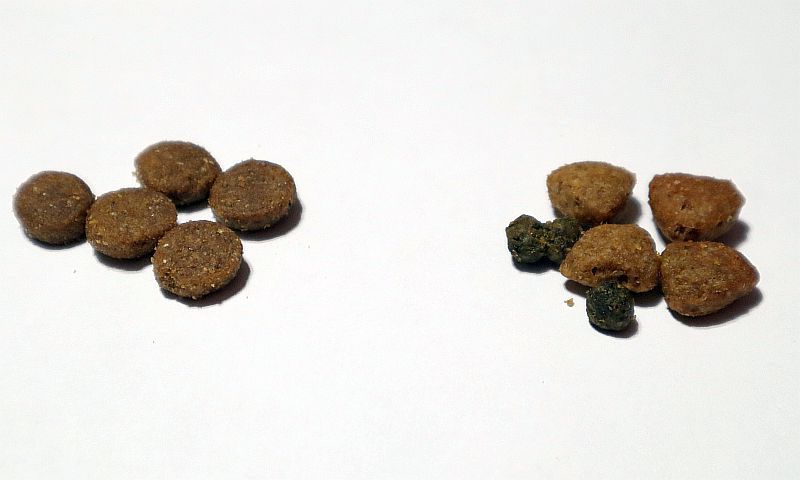
So, how did it go when we changed their foods?
Well, Willow made the switch and never looked back.
She gobbled it up just as greedily as she did her old food, and her stomach seemed to take the change in stride. If anything, she may digest the Taste of the Wild recipe slightly better than the Blue Buffalo recipe.
Unfortunately, J.B. did not share this view.
She really didn’t seem to like it, and simply refused to eat it on several occasions. It almost seemed like she was literally choking it down, as she coughed up a few unchewed kibblets after eating several times.
Ultimately, I found that the only way to get her to eat it was to sprinkle a not-insignificant amount of cheese on top. But even when I did this, she’d rarely finish her entire breakfast or dinner.
Sigh.
I will say that they both appeared to digest it well (when J.B. would actually chew it up before swallowing it), and both girls had totally normal poops throughout the experiment.
I didn’t notice any obvious differences in their joint health over the course of the trial, nor any differences in things like energy level or coat health. I didn’t notice any weight gain, either, though I didn’t actually weigh them.
My Specific Case: Taste of the Wild vs Blue Buffalo
So, the food is working for Wi, but not Jabbs. But what about Willow’s ears? Did it actually help?
As a matter of fact, her ears have seemed to get better.
Before making the switch, Willow would flap her ears a lot, furiously scratch them with her paws, and occasionally run outside to rub them on the ground. She’d even cry when doing these things, which was just heartbreaking for the rest of the family.
But two months after making the switch, she’s almost completely free of ear issues!
That’s been a huge relief for us, and strongly suggests that she does have an allergy to one of the ingredients I suspected was the culprit. And because it appears to be working for her in most other respects, I could go ahead and make this her permanent food.
Except…
The new food just does not work for J.B.
She doesn’t like the taste, and I can’t keep giving her a metric butt-ton of cheese everyday (though I guess I could use a good topper or just some wet food). I also need her to start harfing up kibblets on the couch.
So, what am I gonna do?
Honestly, I think I’m going to (gradually) switch Willow back to Blue Buffalo as an experiment.
Lemme ‘splain.
We didn’t just switch her food; we also stopped giving her any people foods containing eggs, wheat, dairy, or chicken.
Any of those things may be her allergic trigger, but the only one addressed by the food was the chicken. So, if I switch her back to a food with chicken, I should be able to tell whether or not that was the trigger.
If her ears stay problem-free, then the problem was likely eggs, dairy, or wheat. And this means that we can continue to feed her Blue Buffalo. We’ll just have to keep eliminating the problematic people foods from her diet.
Blue Buffalo vs Taste of the Wild: FAQ

Still have lingering questions about these two dog foods? We’ll try to help below, by sharing some of the most common things owners want to know.
What is the difference between Taste of the Wild and Blue Buffalo?
There are a few key differences between the brands, but many of the recipes offered by both Blue Buffalo and Taste of the Wild are quite similar.
Blue Buffalo contains the brand’s trademarked LifeSource Bits, which are antioxidant-rich little kibblets, and they offer a wider variety of recipes in general. They also offer more single-protein recipes; most Taste of the Wild recipes feature multiple proteins.
Is Taste of the Wild a high-quality pet food?
Absolutely. Taste of the Wild not only checks off most of the boxes we recommend owners consider when selecting a food (such as being made in the USA and using high-quality, properly labelled proteins), but countless owners around the world have seen it work wonderfully for pet owners and their pets.
Is Blue Buffalo a high-quality pet food?
Yes. Blue Buffalo’s recipes have proven to work well for plenty of dogs and their owners, they’re full of high-quality ingredients (including whole proteins and antioxidant-rich produce), and many recipes are fortified with joint-supporting compounds and probiotics.
What is the closest dog food to Taste of the Wild?
Blue Buffalo’s Blue Wilderness line recipes are pretty close to the grain-inclusive Taste of the Wild recipes. Zignature’s Zssential recipe is a good alternative to Taste of the Wild for owners who want a grain-free, multi-protein food.
As you can see, both of these dog food brands are pretty awesome. So, don’t stress too much about making the choice. You can always switch later if your first pick doesn’t work out.
But now that you’ve heard our thoughts, we want to hear yours, pet owners!
Do you feed your pup a pet food produced by either of these brands? Let us know about your experiences. Which recipe do you buy? How has it worked for your pup? Does the difference in protein content between the two bother you? What do you like most about it?
We’re all ears!


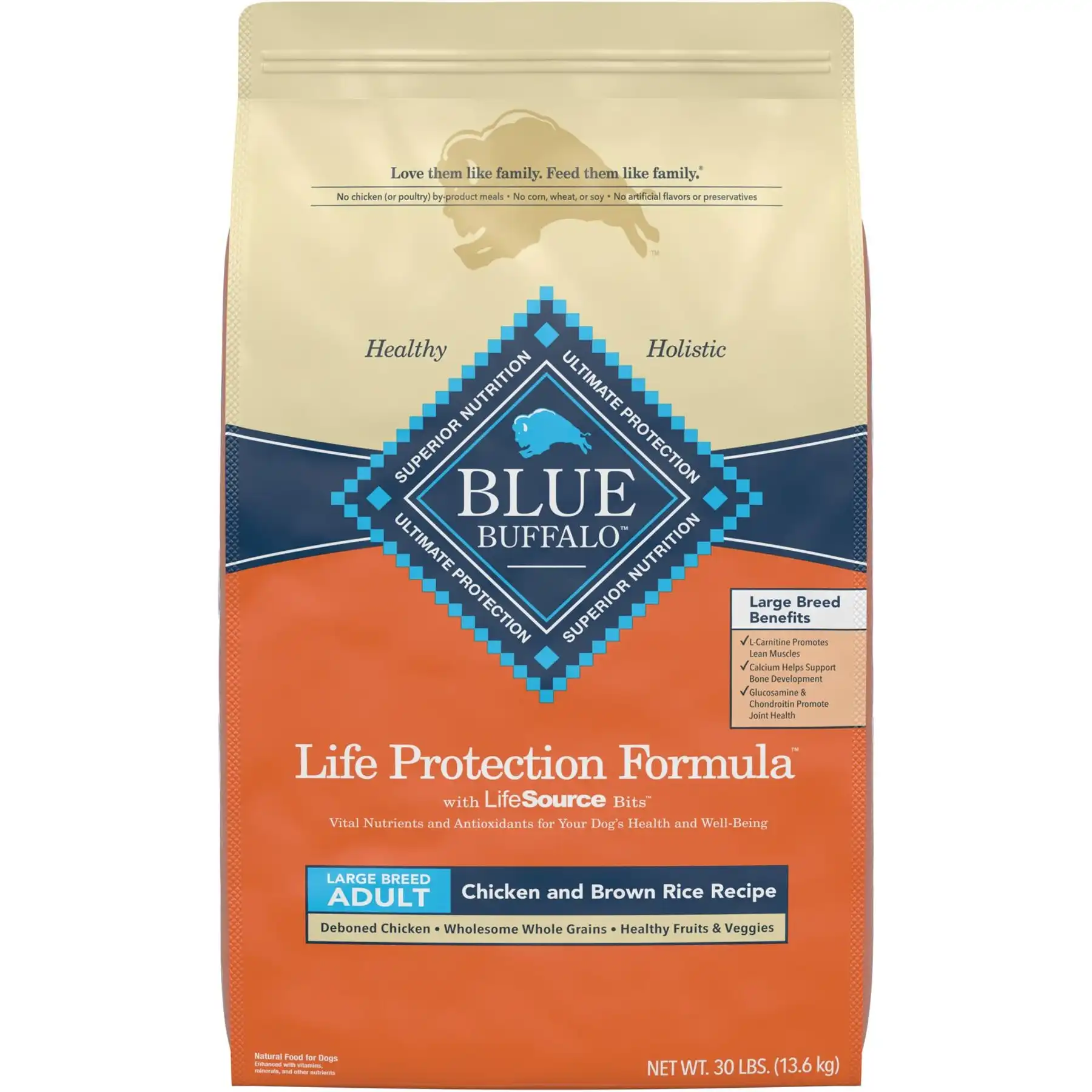
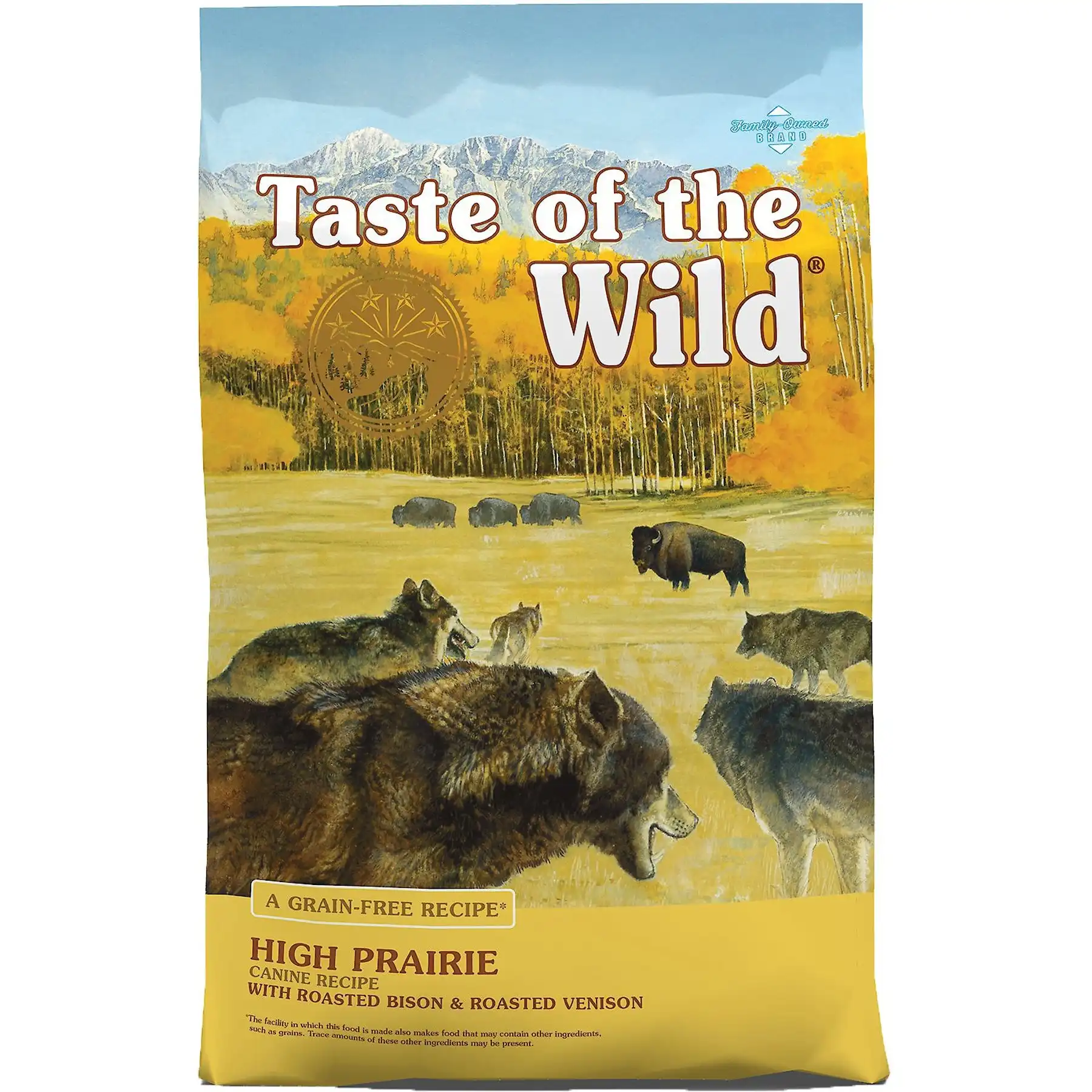









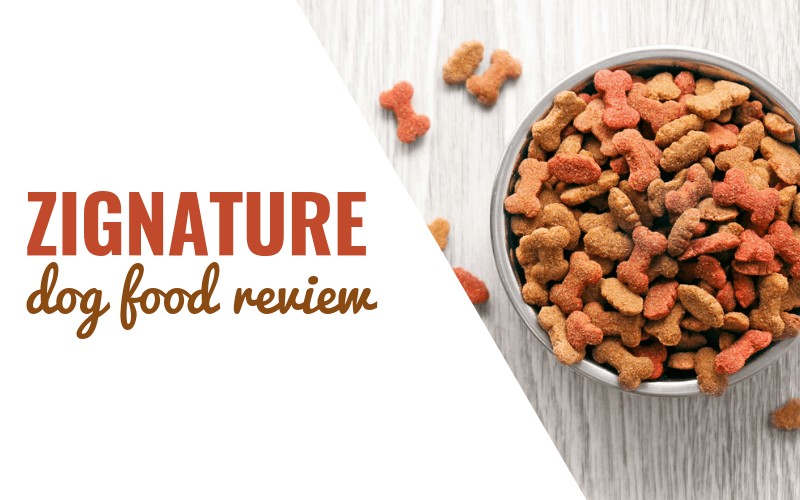
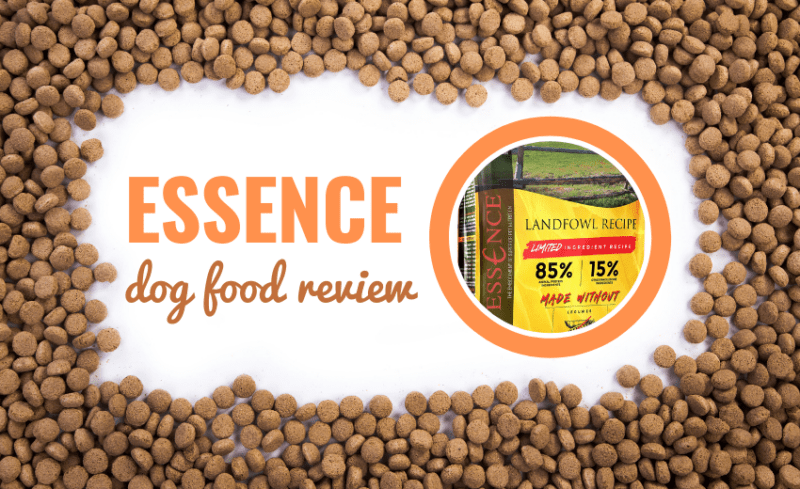
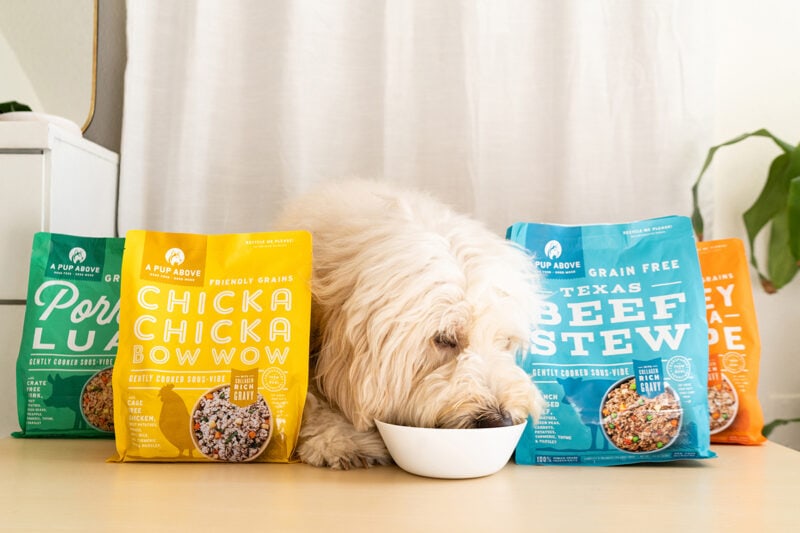

Leave a Comment